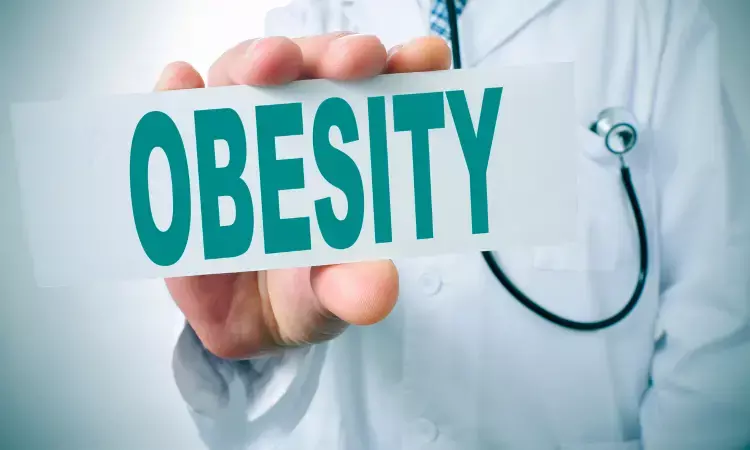- Home
- Medical news & Guidelines
- Anesthesiology
- Cardiology and CTVS
- Critical Care
- Dentistry
- Dermatology
- Diabetes and Endocrinology
- ENT
- Gastroenterology
- Medicine
- Nephrology
- Neurology
- Obstretics-Gynaecology
- Oncology
- Ophthalmology
- Orthopaedics
- Pediatrics-Neonatology
- Psychiatry
- Pulmonology
- Radiology
- Surgery
- Urology
- Laboratory Medicine
- Diet
- Nursing
- Paramedical
- Physiotherapy
- Health news
- Fact Check
- Bone Health Fact Check
- Brain Health Fact Check
- Cancer Related Fact Check
- Child Care Fact Check
- Dental and oral health fact check
- Diabetes and metabolic health fact check
- Diet and Nutrition Fact Check
- Eye and ENT Care Fact Check
- Fitness fact check
- Gut health fact check
- Heart health fact check
- Kidney health fact check
- Medical education fact check
- Men's health fact check
- Respiratory fact check
- Skin and hair care fact check
- Vaccine and Immunization fact check
- Women's health fact check
- AYUSH
- State News
- Andaman and Nicobar Islands
- Andhra Pradesh
- Arunachal Pradesh
- Assam
- Bihar
- Chandigarh
- Chattisgarh
- Dadra and Nagar Haveli
- Daman and Diu
- Delhi
- Goa
- Gujarat
- Haryana
- Himachal Pradesh
- Jammu & Kashmir
- Jharkhand
- Karnataka
- Kerala
- Ladakh
- Lakshadweep
- Madhya Pradesh
- Maharashtra
- Manipur
- Meghalaya
- Mizoram
- Nagaland
- Odisha
- Puducherry
- Punjab
- Rajasthan
- Sikkim
- Tamil Nadu
- Telangana
- Tripura
- Uttar Pradesh
- Uttrakhand
- West Bengal
- Medical Education
- Industry
Relative Fat Mass strongly predicts new-onset Type 2 Diabetes

Netherlands: Research published in the European Journal of Internal Medicine has highlighted that in the Dutch population, Relative Fat Mass (RFM) strongly predicted new-onset Type 2 Diabetes (T2D).
The researchers said that this could be used routinely in the general practice setting for estimating the future risk of diabetes.
Obesity is a global public health challenge. Along with the rising rate of obesity, the incidence of chronic diseases like type-2 diabetes (T2D) has also increased. BMI measurement is most common for screening for obesity.
Relative fat mass (RFM) estimates the whole-body fat percentage. It is sex-specific and relatively easy to calculate. This obesity index reflects the whole body fat percentage more accurately than BMI.
There need to be more large-scale studies that examine the predictive value of RFM in the general population for new-onset Type 2 Diabetes (T2D).
Navin Suthahan and colleagues postulated that RFM would be a stronger predictor of new-onset T2D.
The team assessed associations of RFM, body-mass index (BMI), waist circumference (WC) and waist-to-hip ratio (WHR) with incident T2D in the PREVEND cohort. The results were compared with those from the LifeLines and Rotterdam studies.
The study summary is given below:
- The researchers collected data from three Dutch community-based cohorts free of baseline diabetes, namely, the PREVEND cohort (median age 48 years and follow-up duration of 12.5 years), Lifelines (median age and follow-up duration: 45.5 and 3.8 years) and Rotterdam (median age 68 years and follow-up duration of 13.9 years) cohorts.
- 522 PREVEND participants out of 7961, constituting 6.6 %, developed T2D.
- All adiposity indices were associated with incident T2D significantly (multivariable model).
- 1 SD increase in BMI, WHR and WC increases the risk of developing T2D by 68%, 77% and 61%.
- The Hazard ratio for BMI, WC and WHR was 1.68, 1.77 and 1.61.
- An increase in RFM caused a 119% increased risk of having an HR of 2.19.
- The strongest associations were observed in young individuals < 40 years of age having HR 2.90
- Results were broadly similar in Lifelines and Rotterdam cohorts, n including 93,870 and 5279, respectively.
RFM is strongly associated with new-onset T2D, they wrote.
The researchers concluded, in young individuals, obesity control is essential to reduce the risk of developing T2D in the community
Further reading:
Suthahar, Navin, et al. “Associations of Relative Fat Mass, a New Index of Adiposity, With Type-2 Diabetes in the General Population.” European Journal of Internal Medicine, Elsevier BV, Jan. 2023. Crossref, https://doi.org/10.1016/j.ejim.2022.12.024.
BDS, MDS in Periodontics and Implantology
Dr. Aditi Yadav is a BDS, MDS in Periodontics and Implantology. She has a clinical experience of 5 years as a laser dental surgeon. She also has a Diploma in clinical research and pharmacovigilance and is a Certified data scientist. She is currently working as a content developer in e-health services. Dr. Yadav has a keen interest in Medical Journalism and is actively involved in Medical Research writing.
Dr Kamal Kant Kohli-MBBS, DTCD- a chest specialist with more than 30 years of practice and a flair for writing clinical articles, Dr Kamal Kant Kohli joined Medical Dialogues as a Chief Editor of Medical News. Besides writing articles, as an editor, he proofreads and verifies all the medical content published on Medical Dialogues including those coming from journals, studies,medical conferences,guidelines etc. Email: drkohli@medicaldialogues.in. Contact no. 011-43720751


